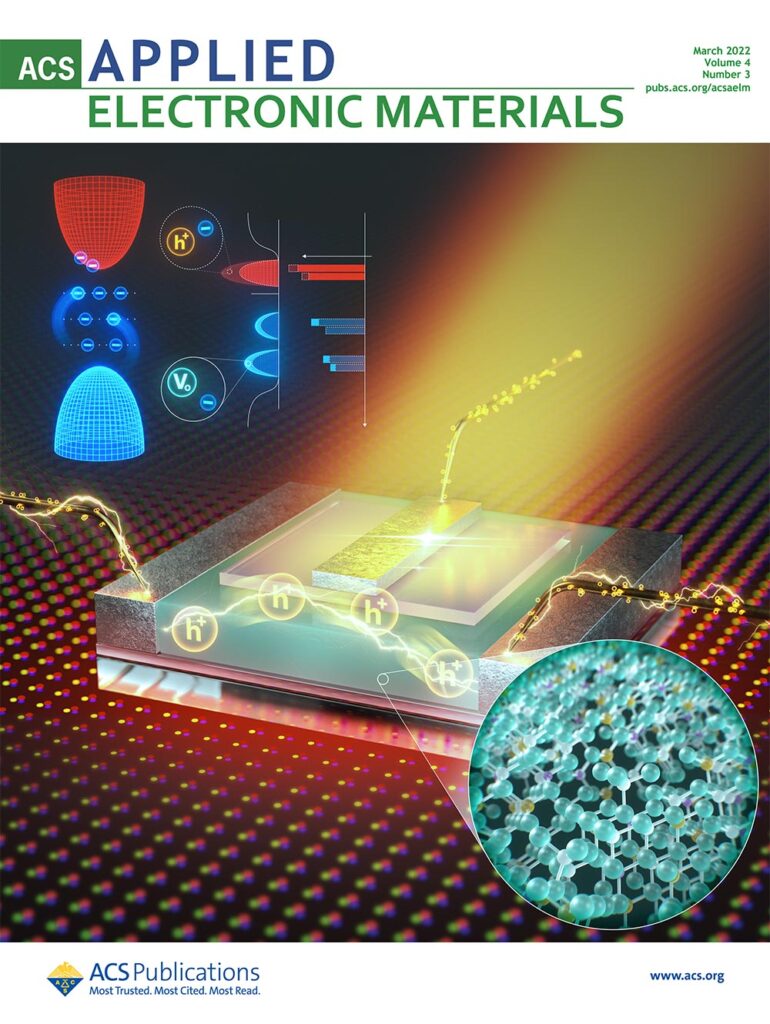
Journal Cover / ACS Applied Electronic Materials / September 27, 2024
https://pubs.acs.org/doi/10.1021/acsaelm.4c01430
Abstract
Positive bias temperature stress (PBTS)-induced defects in self-aligned top-gate coplanar amorphous indium–gallium–zinc–tin oxide (a–IGZTO) thin-film transistors (TFTs) were quantitatively extracted as a function of hydrogen concentration. As the hydrogen concentration increased, the device properties and stability improved. As the stress time increased, the two decay constants that were extracted from the recovery of PBTS increased. Under PBTS, electrons were trapped in multiple defects simultaneously. Quantitative dynamic evolution of defect measurements showed that as the stress time increased, the activation energy and density of defects changed. As electrons moved to the dielectric, the density of shallow-level defects in the channel decreased, while the activation energy and density of deep-level defects increased. With a higher hydrogen concentration in the channel, the changes in defects were smaller. These findings indicate that hydrogen improves stability by passivating electron trap sites.

